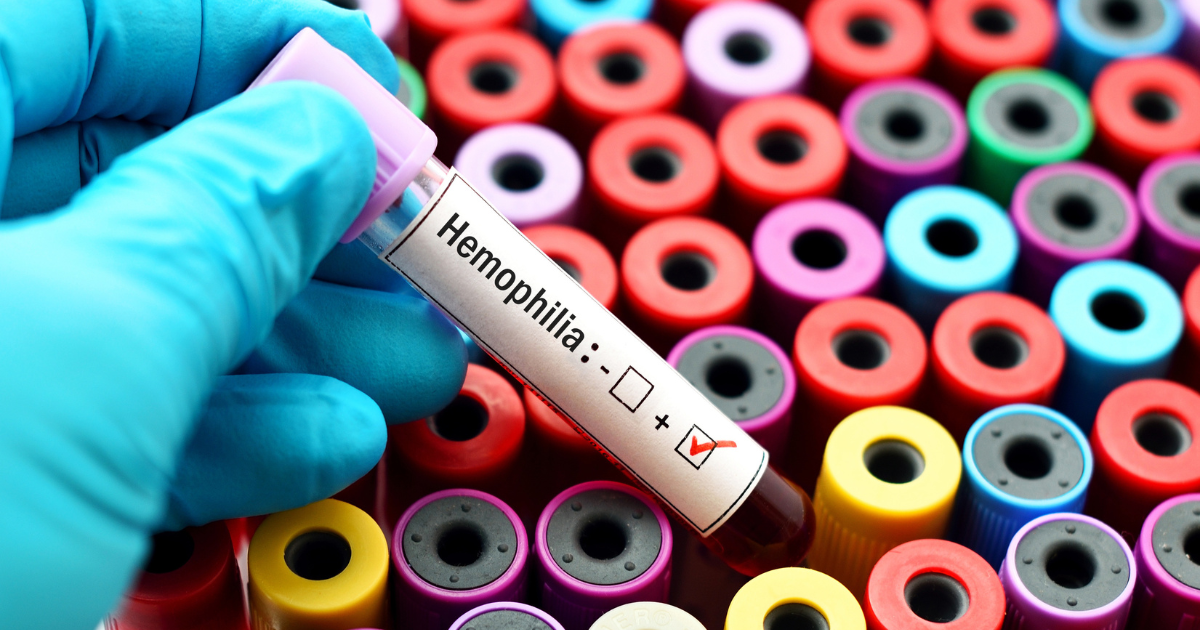What is hemophilia, and is there a cure?

Hemophilia is a rare disorder that disrupts the body’s blood from clotting, increasing the risk of excessive bleeding and bruising. The condition can be painful and disruptive, causing the need for access to lifelong medical treatment, as the disorder can cause problematic internal and external bleeding.
An individual’s body with hemophilia doesn’t make enough proteins (clotting factors) to help control how much they bleed. Low clotting factor levels increase the risk of excessive or uncontrollable bleeding, cause bleeding for no apparent reason or more bleeding than usual after an injury or having surgery.
Hemophilia can be mild, moderate or severe depending on the clotting factor in the blood.
- Mild hemophilia means a person has 5% to 30% of the usual amount of clotting factors in their blood.
- Moderate levels mean 1% to 5% of the usual amount of clotting factor.
- Severe levels mean less than 1% of the usual clotting factor.
There are three types of hemophilia:
- Hemophilia A is the most common type, occurring when a person doesn’t have enough clotting factor VIII. The Centers for Disease Control and Prevention estimates that about 10 in 100,000 have this type.
- Hemophilia B, also called Christmas disease, occurs when a person doesn’t have enough clotting factor IX. The CDC estimates about 3 in 100,000 have this type.
- Hemophilia C is the rarest type, affecting only 1 in 100,000 people. It is also known as factor XI deficiency.
How is hemophilia inherited?
Hemophilia A and B are inherited in an X-linked recessive manner. This means it is caused by a mutation in one of the genes that gives the body instructions for making the clotting factor needed to form blood clots. The change might mean the clotting proteins don’t work correctly or are missing altogether.
Because these genes are carried on the X chromosome, hemophilia is most commonly diagnosed in men. Women carriers of the disease often have no symptoms, with an estimated 10% to 25% of carriers having mild symptoms.
Rare hemophilia that isn’t inherited develops when autoantibodies (protective proteins from the immune system) attack a specific clotting factor. Autoantibodies attack antibodies, working against your body’s cells, tissues and proteins.
How is hemophilia diagnosed?
Most commonly, babies are tested soon after birth. In the United States, most with severe hemophilia are diagnosed at a very young age, and in about two-thirds of cases, there is a family history. People who have a family history of hemophilia should have their children tested.
If you’re experiencing symptoms, your doctor will ask about your medical and family history, perform a physical exam and take blood tests to show if your blood is clotting correctly. If not, clotting factor tests will be required to diagnose the cause and find the hemophilia type and severity.
Genetic testing for hemophilia A and B may be requested for people with a family history. Testing is used to identify if a person is a carrier or to test for hemophilia during pregnancy or shortly after birth.
Is there a cure for hemophilia?
Hemophilia symptoms can tremendously impact a person’s quality of life. Although there is no cure, effective treatments and exciting new gene therapies are available. How much treatment depends on the type, severity and if inhibitors develop (antibodies that attack clotting factors).
Replacement therapy helps by providing a “clotting factor replacement” for what a person’s body cannot do for itself. For those with severe hemophilia, replacement therapy can mean self-administered intravenous plasma infusions several times per week.
In some cases, extra infusions to prevent bleeding (prophylactics) or antifibrinolytics that help keep blood clots from breaking down are needed. For example, FDA-approved Hemlibra® is a prophylactic treatment to prevent or reduce the frequency of bleeding episodes in patients with hemophilia A, with or without factor VIII inhibitors.
New advancements in gene therapy
A potentially life-changing gene therapy for severe hemophilia has been in the works for over two decades and offers a promising difference in approach. Instead of replacing, gene therapy gives a person’s body instructions to make the protein clotting factor on its own.
In 2022, the U.S. Food and Drug Administration approved Hemgenix®, a gene therapy for treating adults with hemophilia type B. Hemgenix® is a single-dose therapy given via IV infusion. The hope is that this one-time treatment will last for years with the goal of the body continuing to make clotting proteins long term.
“The data we’ve been seeing over the last three to four years is good,” says Nebraska Medicine hematology specialist Alex Nester, MD. “So far, gene therapy seems to help people for years. However, how long the body continues to make its own clotting factor is yet to be seen. We hope to see sustained factor levels for decades.”
Hemgenix® was evaluated in two studies of adult men with severe or moderately severe hemophilia B. Effectiveness was based on whether decreases in their annualized bleeding rate (ABR) occurred. One study of 54 participants experienced increases in clotting factor IX, required less replacement and had a 54% reduction in ABR compared to baseline. Patients need to be monitored for liver enzyme elevations and adverse infusion reactions.
“The ideal candidate for gene therapy right now would be a patient with severe hemophilia B, but hemophilia A gene therapy is also going to be offered within the year,” adds Dr. Nester. “The patient needs to have a healthy liver, is currently giving themselves clotting factor and have no inhibitor complications.”






